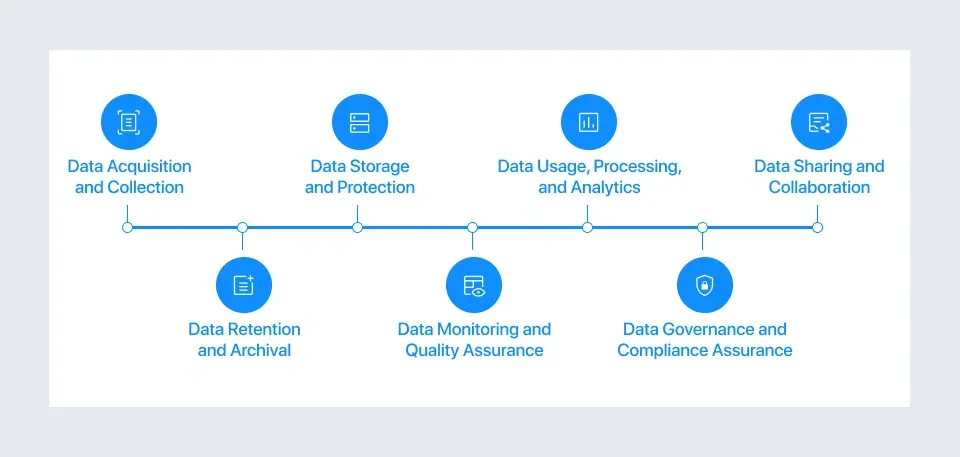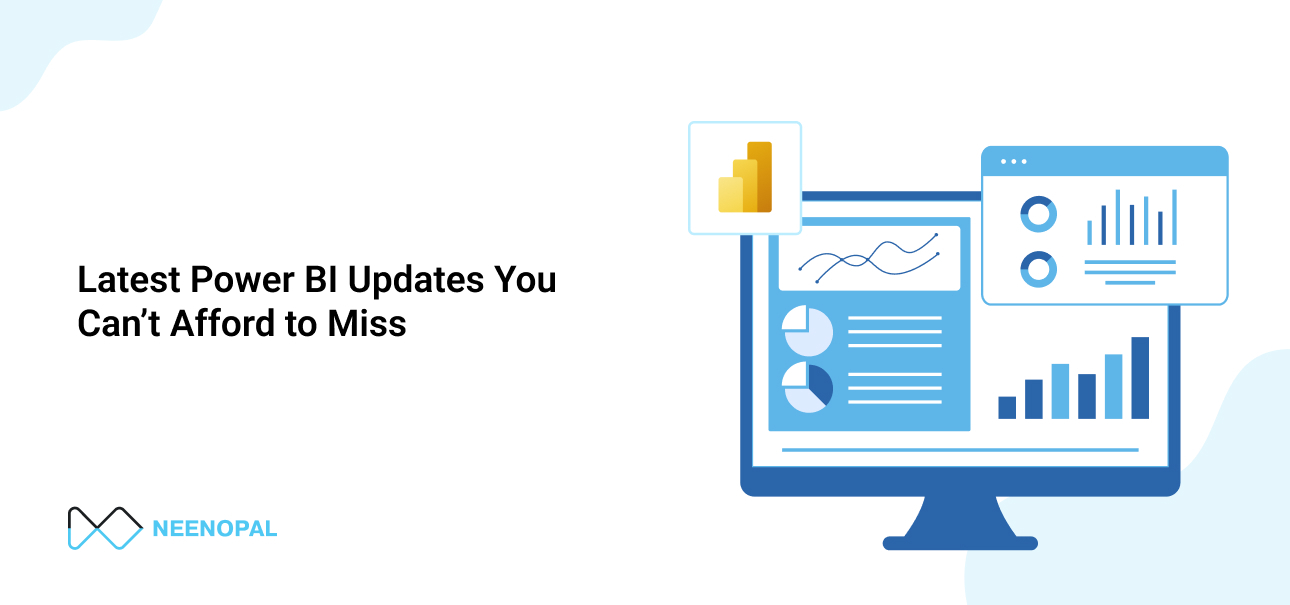Is your organization prepared to manage the growing complexity of data as it scales?
As the organization scales, data complexity also increases. Customer information or data flows from multiple channels, such as websites, applications, backend systems, and other third-party sources. Modern data management enables efficient data management by utilizing more than just infrastructure.
With the help of data management best practices, organizations are employing strategies and governance tools to handle diverse data types while managing large data volumes. This indeed requires a well-defined framework that brings structure to the complexity. It will define the data when it passes through various phases, such as storing, protecting through compliance or standards, and making it readily available for analysis. These stages are often part of data life cycle management and play an essential role in data quality, accessibility, and security.
Read this blog to explore the data management lifecycle, best practices, and risk mitigation strategies to make data actionable and trustworthy.
The Importance of Enterprise Data Management in the Modern World
Recently, organizations have been increasingly leveraging digitization in business operations, emphasizing the importance of data management strategy. The influx of vast data, including customer interactions and transactions, requires a modernized approach to secure data handling.
This gives rise to AI-driven analytics and governance, which informs how well-governed data will make the insights accurate and automate the decision-making at the same time. Moreover, data breaches and privacy violations are critical issues that hamper an organization's reputation. They demand a structured data management and governance framework to reduce the risks of legal penalties.
Therefore, modern data analysts are attracted to moving towards AI-driven analytics by harnessing the data mesh and data-centric computing. Such modern approaches encourage decentralized ownership, scalability, and faster access to insights, turning raw data into a strategic asset.
The Data Management Lifecycle: From Collection to Governance
The data lifecycle management involves the sequence of steps a data goes through to ensure the data is retained securely and maintained in compliance while the organization's people are accessing it. Here are the phases to consider:

1. Data Acquisition and Collection
This stage begins with capturing data from multiple sources and validating it at entry to avoid duplication, biases, or errors. The data can be collected from social media channels, financial transactions, databases, or manually entered. To get accurate data, hire the right personnel and document the collection methods and tools to maintain the data quality, transparency, and repeatability.
2. Data Storage and Protection
Now that you have collected data, your data deserves a secure and scalable home with a well-defined data architecture. There are multiple tools and technologies to store data, such as cloud storage, on-premise storage, and datasets that will be uploaded to the cloud. Using a Relational Database Management System (RDBMS) will make the processing and aggregation of data possible. This database system regularly retrieves data and stores it in pre-defined intervals to ensure the completeness of data.
3. Data Usage, Processing, and Analytics
At this phase, the collected data is processed and prepared for analysis. This involves data cleaning and transformation, which converts the data into a suitable structure. Secondly, it integrates data from disparate systems to make it a cohesive dataset that leverages decision-making. The data must be cleansed, integrated, and transformed through ETL/ELT processes.
4. Data Sharing and Collaboration
This stage is concerned with tracking the data usage to ensure it meets the business standards and compliance. The purpose is to ensure that accessibility is balanced with privacy and regulations. Platforms like cloud-native sharing solutions can support secure collaboration and enable teams to work with consistent databases. This aligns with the implementation of data governance policies and security measures for maintaining privacy while collaborating.
5. Data Retention and Archival
Data archival is crucial in the data management lifecycle, but is often neglected. Data deletion is the process of removing duplicate or redundant data to optimize data storage. This involves implementing efficient deletion policies along with an action plan outlining the specific steps to achieve the objective.
6. Data Monitoring and Quality Assurance
This step involves data maintenance, which is an ongoing process to ensure that data is consistent and upholds robust data quality. To that end, conduct regular audit trails and data refreshes to keep the information reliable. Proactive anomaly detection tools help identify errors before they disrupt operations, maintaining confidence in the datasets that power critical decisions.
7. Data Governance and Compliance Assurance
The last stage involves data foundation and compliance, whereby organizations prioritize security management, structured data management, and ethical data storage. For data-driven organizations, it means moving past rigid rules and embracing decentralized ownership models that enable teams to oversee their data products within a cohesive governance structure. This practice can improve accountability and make data a strategic asset that is responsibly managed.
How to Build a Strong Modern Data Management Roadmap
Successful data management and delivery depend upon the right collaboration between IT and the best data management tools, processes, and solutions. A well-defined roadmap will define the future-ready data strategy that fits your business model. Building one requires a mix of strong guiding principles and a phased, repeatable cycle.
1. Principles for Modern Implementation
Modern data management needs to be scalable, modular, and autonomous. With data management capabilities, organizations ensure that data frameworks grow with rising volumes. Modularity allows organizations to adopt new technologies without overhauling existing systems. With the use of AI and automation, autonomy increases, which reduces manual intervention and accelerates decision-making. Together, these principles provide both resilience and flexibility.
2. The Phased Cycle: Assess → Design → Deploy → Adapt
A modern data management roadmap shows a clear cycle:
-
-
- Assess the current state of data.
- Design architectures, policies, and governance frameworks aligned with business goals.
- Deploy tools, platforms, and processes to put the design into action.
- Adapt continuously by monitoring performance, incorporating feedback, and upgrading systems as needs evolve.
-
3. Spotlight on Autonomous Data Products & Data Mesh
The roadmap for modern data management is transformed with autonomous data products and data mesh architectures. The acceleration of decentralized ownership models allows teams to manage their datasets independently with clear accountability. When included in the roadmap, these guidelines can improve scalability within control and compliance.
Tackling the Biggest Data Management Risks
Even strong strategies would fail without proper data risk management. When organizations scale, they invite vulnerabilities into the architecture and protocols into the system, which can quickly erode trust.
- Data Security Risks and Mitigation: This includes security risks associated with poorly managed data, weak passwords, unauthorized access, and inadequate backup that can lead to vulnerabilities. These data security risks in modern data management can cause cybercriminals to enter your system. Investing in encryption, multi-factor authentication, and role-based access control (RBAC) is paramount for mitigating these issues.
- Architectural Risks: Monolithic data architecture can cause data integration issues due to less scalability and agility. Along with integration complexities, data silos are another risk that can cause fragmented views and data inconsistencies. Adopt a unified data platform and implement an ETL pipeline to transform data into consistent formats.
- Data Governance Risks: Failing to establish clear data governance policies can lead to a loss of trust and reputation. This can arise from inconsistent governance practices and an inability to adapt to evolving regulations. For that, prioritize decentralized ownership accelerated with a federal governance model.
- Data Quality Risks: Poor or inaccurate data can undermine data analytics business decisions. Missing values or outdated information can hamper operations. Organizations must implement automated data validation and establish a transparent process for scanning data sources to reconcile issues before they impact business.
Best Practices & Recommendations for Today’s Data Leaders
Today, business leaders find it challenging to balance upholding data integrity and compliance with maintaining innovation capabilities. This approach in modern data management requires a clear process, cultural shifts, and a forward-thinking strategy. Here are some recommendations for ensuring the reliability, agility, and accessibility of data aligned with business objectives.
- Embed Governance into Everyday Workflows: Data usage shouldn't be a bottleneck. That is why establishing clear governance policies is necessary for audit, retention, and data disposal. Leverage RBAC and compliance management systems while managing the entire data lifecycle for secured data management.
- Implement Enterprise Data Architecture, Prioritizing Decentralization: After understanding the stakeholders' requirements, develop enterprise data management frameworks including Integration Plans, and Security and Compliance Checklists. Frameworks like data mesh allow teams to own and manage their data domains, but without clear standards, chaos can take place.
- Data Quality is Paramount: Organizations need to establish clear data quality standards, implement centralized governance systems, and conduct robust audits. They should also apply various data cleansing methods to the EPL pipeline and assess the data against predefined metrics.
- Plan for Continuous Improvement: Since the data landscape is evolving, organizations must focus on conducting regular maturity assessments and adopting new practices to prepare for new challenges. Maintain consistent documentation and a manual to record each function to promote clarity and improve collaboration.
What’s Next: The Future of Data Management
Modern data management is defined by intelligence, decentralization, and continuous adaptability. While understanding the data lifecycle is necessary, developing a future roadmap to ensure the system's scalability and adaptability is also essential. For that, regular audit trails should be developed, feedback mechanisms utilized, and ongoing system monitoring should be ensured to identify key risks early. Companies need to embrace iterative governance to unlock the full potential of data as a driver of growth, innovation, and competitive advantage.
Frequently Asked Questions
1. How does modern data management differ from traditional approaches?
Modern data management differs from the traditional approach in terms of storage and control. The conventional approach focuses on centralized IT control and storage, while data management today is widely decentralized, shifting from cloud-based solutions to flexible data-driven platforms.
2. What are the most significant risks in data management today?
Key risks include data breaches, compliance failures, poor data quality, and poor governance. These risks can lead to financial loss, reputational damage, and missed opportunities without proper frameworks.
3. How can companies future-proof their data management strategy?
You can future-proof your data by adopting modular architectures and scalable cloud platforms. Additionally, proactive governance, prioritizing data quality, and using AI automation for data collection and archival will significantly enhance data accessibility.





